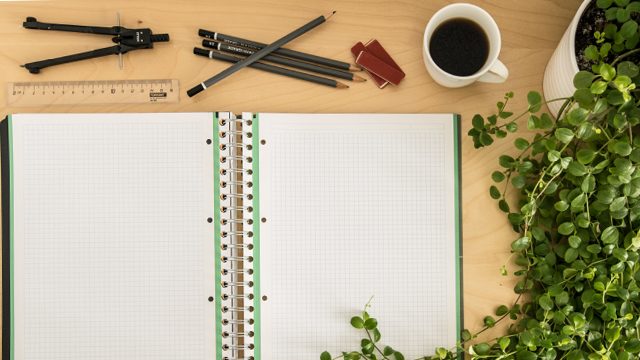SUMMARY
This is AI generated summarization, which may have errors. For context, always refer to the full article.

MANILA, Philippines —The bullet journal system has really taken off. These days there are lots of layouts, trackers, and aesthetically intimidating bullet journal spreads on social media. For beginners it’s pretty easy to find yourself easily overwhelmed by the fancy headers and the perfect calligraphy that some people seem to tackle with ease.
Several friends have told me, “It seems like it’s a lot of work,” but it’s really not – that’s just what it looks like on Instagram. I’m one of the laziest people I know and if I can pull it off, so can you!

Here are some fuss-free tips that I’ve sworn by these past couple of years to get you started on your lazy person bullet journal journey:
1. Familiarize yourself with fundamentals
If you clicked this article, there’s a pretty good chance you might already have an idea of what a bullet journal might be like. It’s a system that will help you keep track of your lists, agenda, to-dos, what-have-yous.
Before you go on a stalking spree on Instagram checking out other people’s spreads, learn how to set it up yourself first. I highly recommend watching this basic video because it gives you the fundamentals without the pressure of keeping up with everyone else’s fancy layouts.
2. Stick to your basic tools
First order of business is to find out what notebook would be best for you. When I started out, I used a wire-bound notebook from Muji with grid lines. This works great because grid lines are very lazy person-friendly because sometimes you don’t want to draw lines, and the wire binding makes it easy for you to rip out pages, so you can do over as you please, especially when you’re experimenting.
I know it’s tempting to pick up those fancy calligraphy pens in all the colors and the paste highlighters, which is great if you’re going to use them a lot, but if you don’t really have the time, I recommend picking up just a pen and a ruler.
I also added highlighter to my personal list of tools because I don’t have time to make fancy headers or to color code my lists, so it helps me mark out important details or to separate between topics.
Assess what you need, and buy as you go along instead of splurging in one go. When I started out, I thought I wanted to color-code my notes until reality set in and I realized I don’t have time for that. A black pen, a ruler, and a highlighter was all I really needed.
Using just one pen makes it look neater and less cluttered, too. Besides, if anyone asks, you can tell them you’re going for “minimalist” when really it’s “I’m too lazy to carry around a lot of pens.”
3. Begin with layouts that you’re already familiar with
I’m pretty sure it’s tempting to use and try out all those fancy layouts that some people post but if you’ve previously used a planner, you might want to start by copying that layout first. By starting with something you’re already familiar with and use, it would be easy to make changes later on as you see fit.
An old system that you’re already used to is the perfect backbone for your needs. It will also make starting out so much more comfortable and less intimidating.
When I started out, I knew that I planned my days per week, so I copied the layout of some planners I used before. I later tweaked it so that I have all the events on a different page and the tasks on another, but the day to day is still pretty similar.
As you go along, you’ll eventually figure out which days or uses you need to allocate more space for, or how many pages you’ll need for a week.
4. Don’t be afraid of mistakes
You’re going to mess up. That’s fine. You can rip out the page if you like, or start over an entire spread. I used to do that when I would mark things up wrong until I realized I can live with copious amounts of correction tape on my weekly spread. Missed a week? No pressure. Pick up where you left off! It’s not supposed to be perfect! Which brings me to my next point…
5. Keep in mind: it’s supposed to work for you
Some people find it relaxing to color and stylize their bullet journals while some people don’t really want to bother. Whichever works!
If you’re struggling with keeping up with your trackers or the current template of your weekly spread, feel free to abandon it or try out something else. Remember, it’s supposed to make your life much easier, not harder! Stick with the system for a couple of weeks and see if you get the hang of it. If something feels off, adjust as you need to.
There’s no pressure either to keep a log every day. Some people love to log all the activities in their day while some just prefer to keep track of important events and tasks. The beauty of the system is that it’s flexible so take advantage of that to make sure it works around what you need.
5. Make it a habit
Ever abandoned ship in the middle of a planner? To make sure you don’t forget, always make sure to carry it around with you. If you’re at work, take it out of your bag and open your weekly spread (or daily, whichever works) so you know to log things there instead of just making a mental note.
Use it as much as you can, whether it’s to list down groceries, take notes during a meeting, or to jot down your random thoughts at the end of the night. Being aware of the things you usually like to take note of, and incorporating it into your system will make it more efficient and useful for you. Eventually it will be second nature to you to reach for your bullet journal whenever you need to take note of something.
The extras
If you’re looking to level up your game while still exerting the bare minimum amount of effort possible, here are a few things I picked up:
Post-it note
Whenever I have a list of tasks for a project that will extend to a long period of time, I jot them down on a post-it. That way, when I start on the next week, I can just stick on the post-it to the next spread instead of having to copy it down or migrate it every single time. I also use sticky notes for little reminders that I want to stick out or smaller tasks.
Stickers
I always want a bit of fun in my bullet journal but I can’t draw to save my life so the next best thing for me is stickers. I hoard tiny stickers and stick them all over my bullet journal for some pizzazz without the effort.
Washi tape
Some people use their washi tape to decorate but I use it as an alternative to correction tape whenever I make a mistake (make sure you can write over it legibly!) or to tape up loose paper I shouldn’t lose like receipts and prescription.
Do you bullet journal too? Leave me some of your tips or link me to your layouts in the comments below. I’d love to see them! – Rappler.com
Add a comment
How does this make you feel?
There are no comments yet. Add your comment to start the conversation.